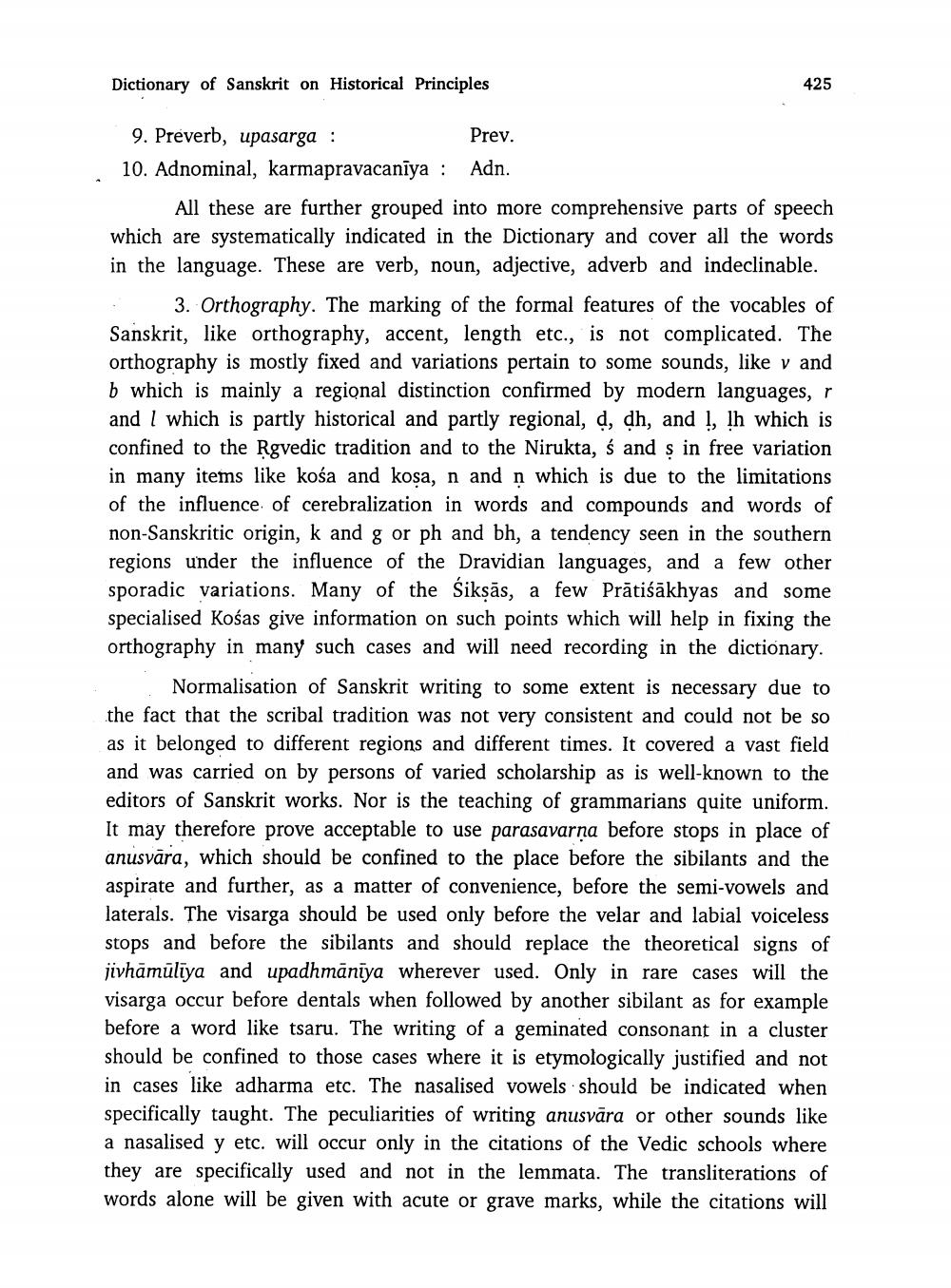________________
Dictionary of Sanskrit on Historical Principles
425
9. Preverb, upasarga :
Prev. 10. Adnominal, karmapravacanīya : Adn.
All these are further grouped into more comprehensive parts of speech which are systematically indicated in the Dictionary and cover all the words in the language. These are verb, noun, adjective, adverb and indeclinable.
3. Orthography. The marking of the formal features of the vocables of Sanskrit, like orthography, accent, length etc., is not complicated. The orthography is mostly fixed and variations pertain to some sounds, like v and b which is mainly a regional distinction confirmed by modern languages, and I which is partly historical and partly regional, d, dh, and 1, lh which is confined to the Rgvedic tradition and to the Nirukta, ś and s in free variation in many items like kośa and kosa, n and n which is due to the limitations of the influence of cerebralization in words and compounds and words of non-Sanskritic origin, k and g or ph and bh, a tendency seen in the southern regions under the influence of the Dravidian languages, and a few other sporadic variations. Many of the Siksās, a few Prātiśākhyas and some specialised Kośas give information on such points which will help in fixing the orthography in many such cases and will need recording in the dictionary.
Normalisation of Sanskrit writing to some extent is necessary due to the fact that the scribal tradition was not very consistent and could not be so as it belonged to different regions and different times. It covered a vast field and was carried on by persons of varied scholarship as is well-known to the editors of Sanskrit works. Nor is the teaching of grammarians quite uniform. It may therefore prove acceptable to use parasavarna before stops in place of anusvāra, which should be confined to the place before the sibilants and the aspirate and further, as a matter of convenience, before the semi-vowels and laterals. The visarga should be used only before the velar and labial voiceless stops and before the sibilants and should replace the theoretical signs of jivhämūliya and upadhmānīya wherever used. Only in rare cases will the visarga occur before dentals when followed by another sibilant as for example before a word like tsaru. The writing of a geminated consonant in a cluster should be confined to those cases where it is etymologically justified and not in cases like adharma etc. The nasalised vowels should be indicated when specifically taught. The peculiarities of writing anusvāra or other sounds like a nasalised y etc. will occur only in the citations of the Vedic schools where they are specifically used and not in the lemmata. The transliterations of words alone will be given with acute or grave marks, while the citations will




